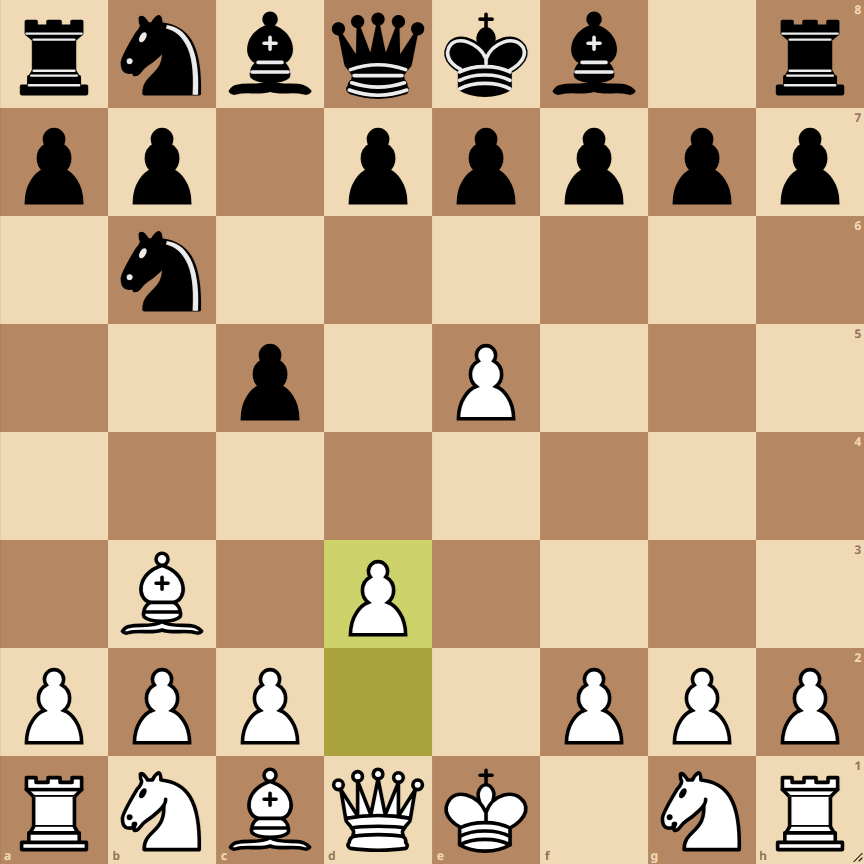How to Play the Alekhine Defense, Kmoch Variation
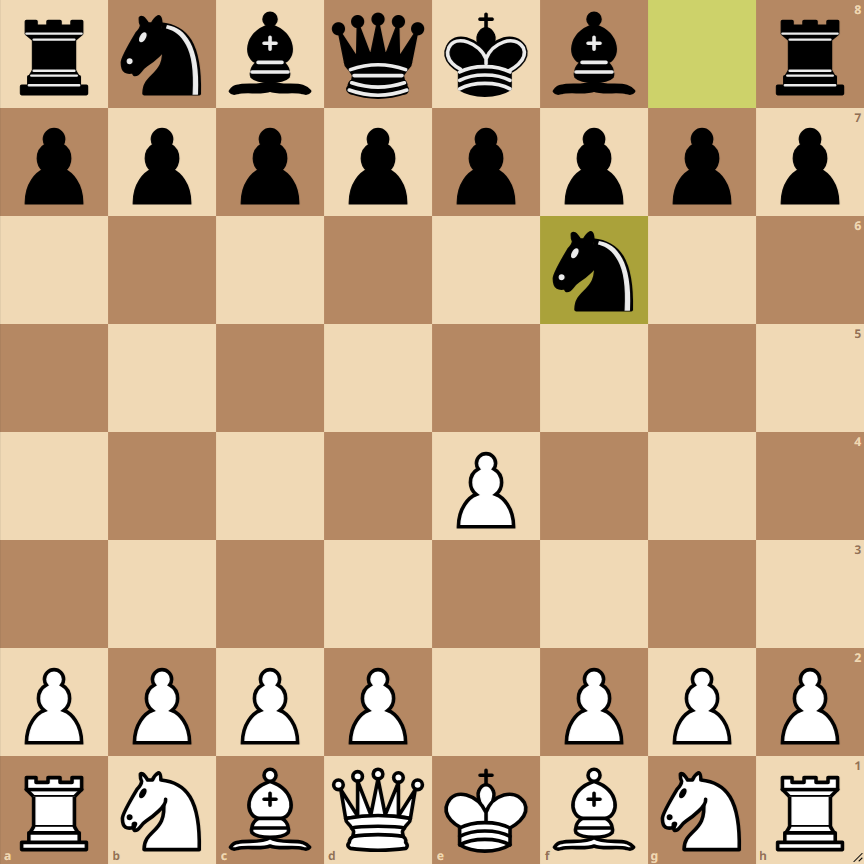
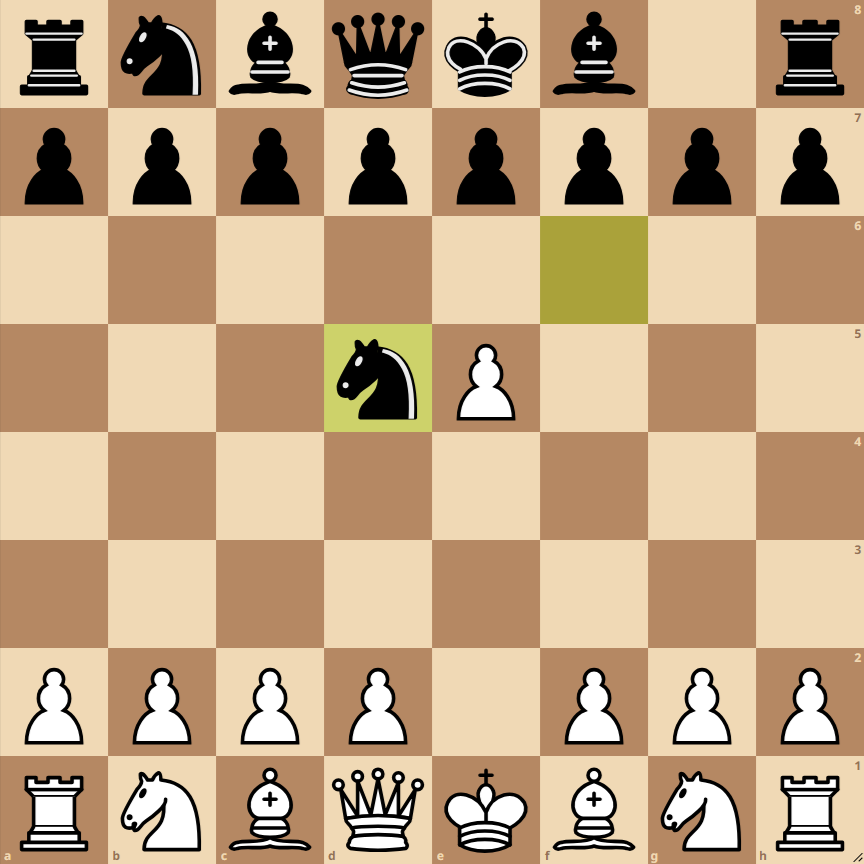
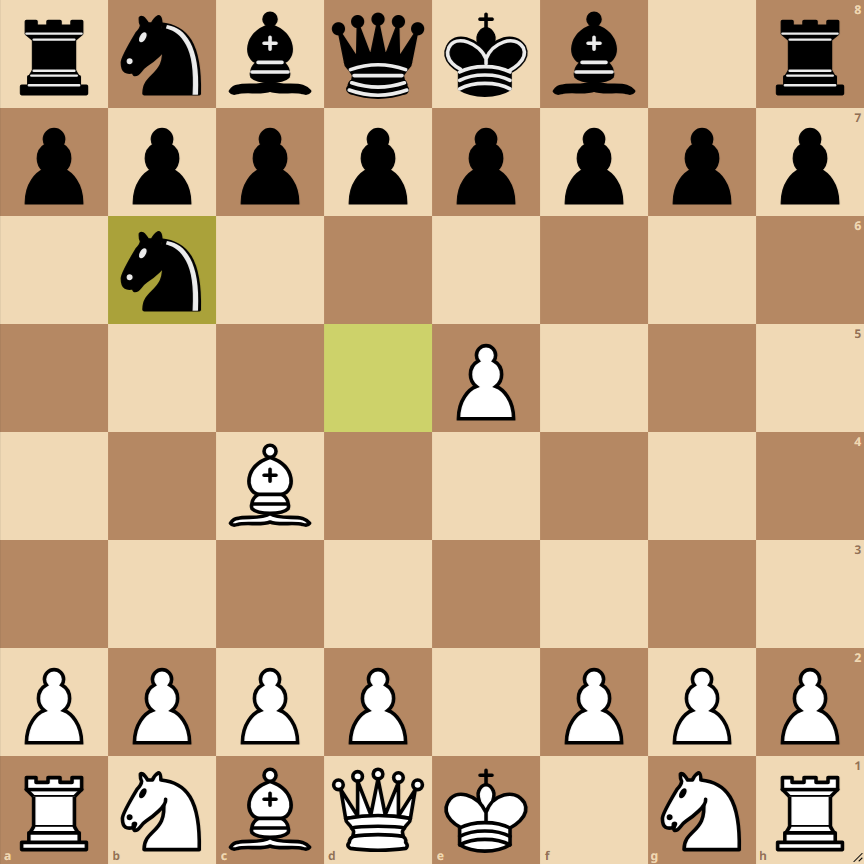
- 1. e4: White opens with the king’s pawn, aiming to control the center and prepare for piece development.
- 1… Nf6: Black responds with the Alekhine Defense, inviting White to advance their pawn to e4.
- 2. e5: White advances the pawn to gain space and attack the Black knight.
- 2… Nd5: The Black knight retreats to d5, a strong central square.
- 3. Nc3: White develops their knight to c3, targeting the Black king’s side and preparing for castling.
- 3… Nb6: The Black knight relocates to b6, pressuring the White bishop and exerting more control over the center.
- 4. Nb3: The White bishop retreats to b3 to maintain pressure on the Black king’s side and avoid capture.
- 5. d3: White plays a preparatory move, reinforcing the center and supporting the potential advance of the c4 pawn if needed.
Variations of the Alekhine Defense, Kmoch Variation
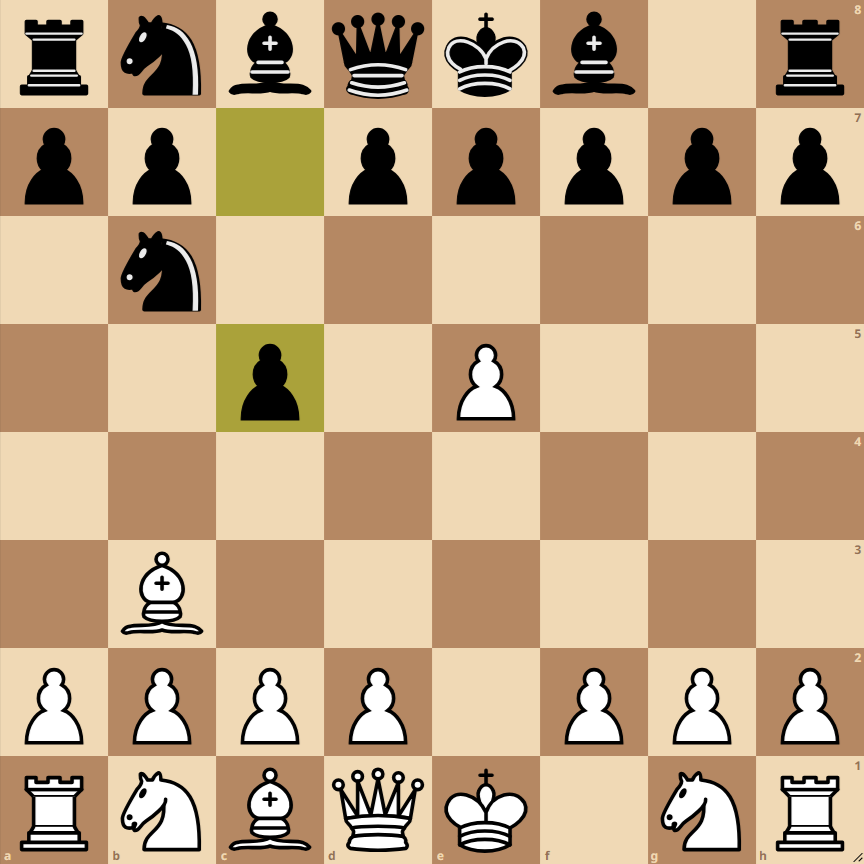
1… d6
An alternative for Black is to play 1… d6, aiming to prepare a central advance with …e5.
2… dxe5
After 2. e5, Black can choose to capture the pawn on e5, entering a different pawn structure and challenging White to regain the material.
4… d5
Following 4. Nb3, Black can play …d5, seeking to free their position and challenge the White pawn structure in the center.

